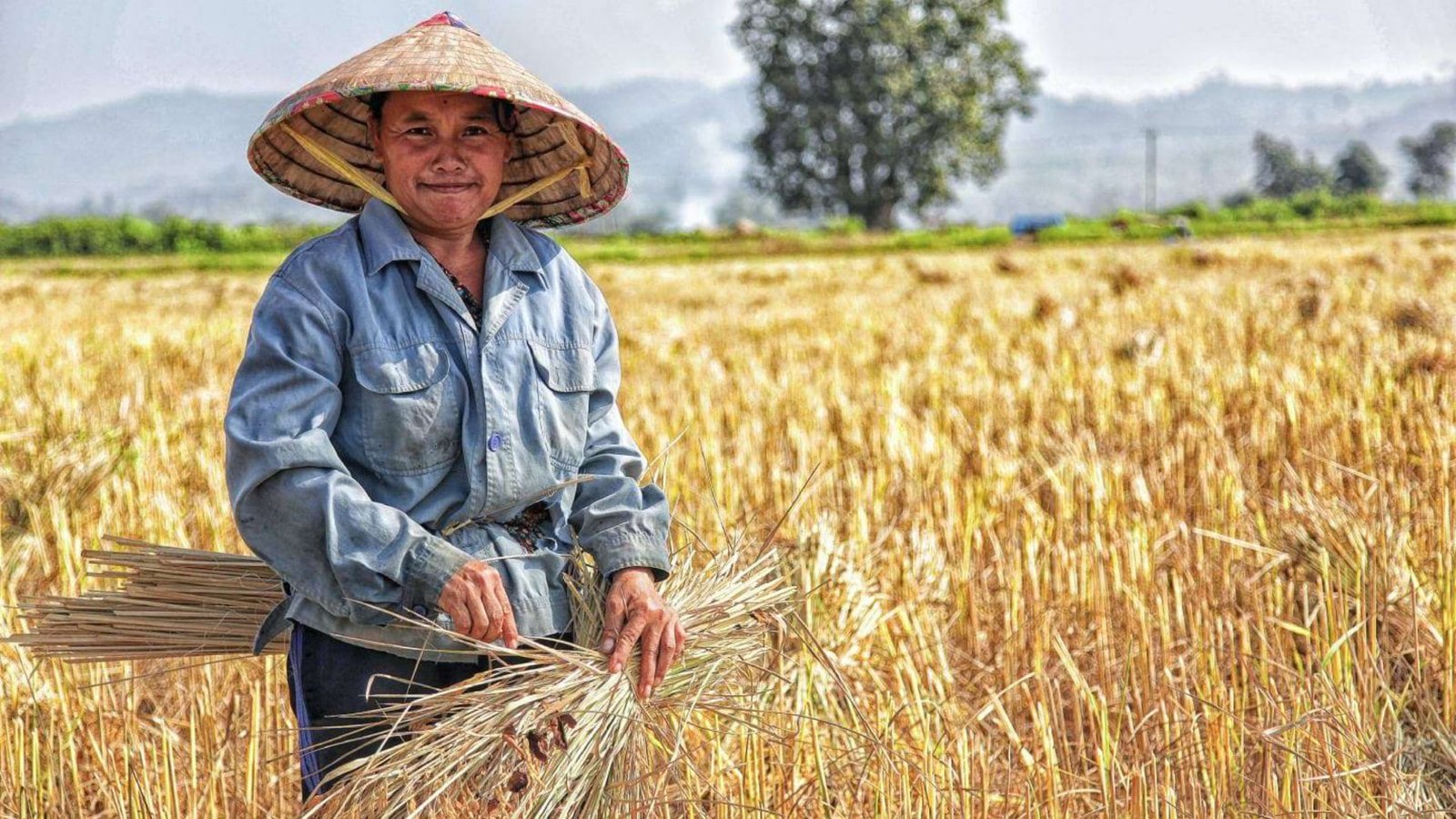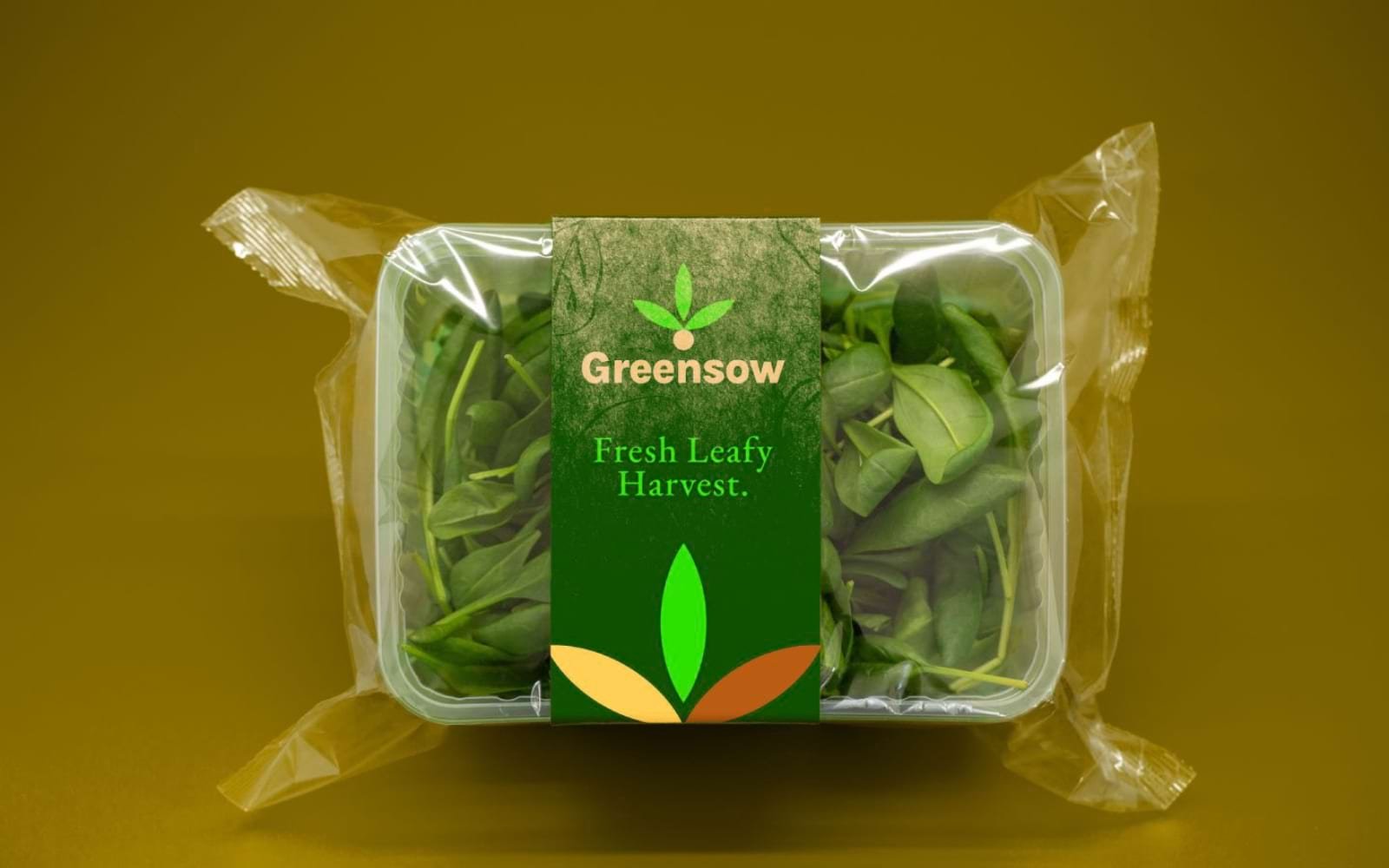Design
The Ultimate Guide to Branding in Agriculture: Boost Your Farm's Success
09.02.2025
By shaikh asif

Design
09.02.2025
By shaikh asif
Branding in agriculture involves creating a distinct identity for your agricultural business that sets it apart from competitors. This identity is reflected in your business name, logo, messaging, and overall visual and verbal communication. Effective branding communicates your values, mission, and the quality of your products or services to your target audience.
Components of Agricultural Branding
Brand Identity: This includes the visual elements such as the logo, color scheme, typography, and packaging. For instance, a logo that reflects sustainability and growth can resonate well with consumers in the agriculture sector.
Brand Positioning: This is about finding a unique place in the market that distinguishes your brand from others. It answers the question: why should customers choose your brand over competitors?
Brand Messaging: This involves crafting messages that convey the essence of your brand to your audience. It includes your mission statement, value proposition, and key messages that consistently reinforce your brand’s identity.
Brand Experience: This encompasses every interaction a customer has with your brand, from visiting your website to purchasing your products. A positive and consistent brand experience fosters customer loyalty.

Consistency in branding is crucial as it builds recognition and trust among consumers. Strategic branding ensures that all aspects of your brand work together harmoniously to create a cohesive image. For example, if your brand emphasizes organic and sustainable farming, every element from your logo to your social media posts should reflect this commitment.
Research Insight: According to a study by Nielsen, brands that consistently present themselves see an average increase in revenue of 23%. This statistic underscores the financial impact of maintaining a strong and consistent brand identity in the agriculture sector.
Strong branding can significantly enhance the visibility and credibility of agricultural businesses. Here’s how:
Enhanced Market Visibility: A well-defined brand stands out in the crowded marketplace, making it easier for potential customers to find and remember your business.
Increased Trust and Loyalty: Consistent and transparent branding builds trust with consumers, leading to increased customer loyalty and repeat business.
Higher Perceived Value: Effective branding can elevate the perceived value of your products or services, allowing you to command premium prices.

In the competitive agricultural sector, effective branding is essential for establishing market leadership, building trust, and driving growth. This article explores the branding journeys of five prominent Indian agricultural businesses: Mahindra Agribusiness, ParryAgro, Godrej Agrovet, IFFCO, Coromandel International, and ITC Limited. By examining their strategic approaches, we can gain valuable insights into creating a successful agricultural brand. Additionally, we will highlight how Alitestar’s premium branding services can help agriculture businesses achieve similar success.
Challenges Faced:
Brand Recognition: Building a distinct identity in the crowded agricultural market.
Market Positioning: Differentiating their diverse agricultural products and services.
Farmer Engagement: Effectively communicating with a large, diverse farmer base.

Branding Strategy:
Market Research and Insights: Comprehensive research to understand farmer needs and market trends.
Brand Identity Development: Developing a cohesive brand identity reflecting Mahindra's innovation and farmer-centric approach.
Strategic Positioning: Highlighting advanced agricultural technologies and sustainable practices.
Integrated Marketing Campaigns: Utilizing traditional and digital marketing channels.
Consumer Engagement: Direct farmer engagement through community programs and social media.
Sustainability Initiatives: Emphasizing sustainable practices and innovations.
Outcomes:
Enhanced brand recognition and visibility.
Established market leadership in the agricultural sector.
Strengthened trust and loyalty among farmers.
Challenges Faced:
Brand Awareness: Building recognition in a niche market.
Market Differentiation: Differentiating their tea products in a competitive market.
Sustainability: Communicating their sustainable practices effectively.

Branding Strategy:
Market Research and Insights: Understanding consumer preferences and market trends.
Brand Identity Development: Developing a strong, unique brand identity.
Strategic Positioning: Emphasizing high-quality, sustainably produced tea.
Integrated Marketing Campaigns: Using traditional and digital marketing to reach consumers.
Consumer Engagement: Engaging with customers through social media and direct marketing.
Sustainability Initiatives: Highlighting sustainable farming practices and CSR activities.
Outcomes:
Increased brand recognition and trust among consumers.
Established a strong market presence in the tea industry.
Strengthened loyalty and community engagement.
Challenges Faced:
Brand Recognition: Establishing a distinct identity within the Godrej Group's diverse portfolio.
Market Positioning: Differentiating their wide range of products and services in a competitive market.
Sustainability: Communicating their commitment to sustainable agricultural practices to a broad audience.

Branding Strategy:
Market Research and Insights: Understanding farmer needs and market trends.
Brand Identity Development: Creating a cohesive and modern brand identity.
Strategic Positioning: Highlighting R&D capabilities and innovative products.
Integrated Marketing Campaigns: Using traditional and digital channels.
Consumer Engagement: Engaging with farmers through community programs and social media.
Sustainability and CSR Initiatives: Emphasizing sustainable practices and CSR activities.
Outcomes:
Enhanced brand recognition and visibility.
Established market leadership across multiple agricultural segments.
Strengthened trust and loyalty among farmers.
4. IFFCO: Empowering Farmers through Cooperation
Challenges Faced:
Brand Awareness: Expanding recognition beyond the cooperative community.
Market Differentiation: Standing out in a crowded market.
Trust and Reliability: Maintaining and enhancing trust among farmers.

Branding Strategy:
Market Research and Insights: Understanding farmer needs and competitor analysis.
Brand Identity Development: Developing a strong, farmer-centric brand identity.
Strategic Positioning: Emphasizing quality agricultural inputs and cooperative values.
Integrated Marketing Campaigns: Leveraging traditional and digital marketing.
Consumer Engagement: Engaging with farmers through community outreach and social media.
Sustainability and CSR Initiatives: Highlighting sustainable practices and CSR activities.
Outcomes:
Increased brand recognition and trust among farmers.
Solidified market leadership in the agricultural input sector.
Strengthened loyalty and community engagement.
Challenges Faced:
Brand Awareness: Increasing recognition and trust among farmers.
Market Differentiation: Standing out in a competitive market.
Sustainability: Communicating sustainable practices effectively.

Branding Strategy:
Market Research and Insights: Understanding farmer needs and market gaps.
Brand Identity Development: Creating a cohesive brand identity.
Strategic Positioning: Emphasizing innovative and sustainable agri-solutions.
Integrated Marketing Campaigns: Using traditional and digital marketing.
Consumer Engagement: Engaging with farmers through community programs and social media.
Sustainability and CSR Initiatives: Highlighting sustainable practices and CSR activities.
Outcomes:
Enhanced visibility and recognition.
Established market leadership in the agri-solutions sector.
Strengthened trust and loyalty among farmers.
ITC Limited: Diversification and Farmer Engagement
Challenges Faced:
Brand Awareness: Establishing a distinct identity for its agricultural initiatives.
Market Differentiation: Differentiating its offerings in a competitive market.
Farmer Engagement: Effectively engaging with a vast and diverse farmer base.

Branding Strategy:
Market Research and Insights: Understanding farmer needs and market trends.
Brand Identity Development: Developing a strong brand identity highlighting farmer welfare.
Strategic Positioning: Emphasizing ITC’s commitment to improving farmer livelihoods.
Integrated Marketing Campaigns: Leveraging traditional and digital channels.
Consumer Engagement: Engaging directly with farmers through community programs and social media.
Sustainability and CSR Initiatives: Emphasizing sustainable practices and CSR activities.
Outcomes:
Enhanced brand recognition and trust among farmers.
Established a strong presence in the agricultural sector.
Strengthened engagement and loyalty among farmers.
Research and Studies
Several studies support the branding strategies employed by these agricultural leaders:
McKinsey & Company: Highlights the importance of strong brand identities and sustainable practices in building customer loyalty and market share.
International Food Policy Research Institute (IFPRI): Emphasizes the role of quality agricultural inputs in improving crop yields.
Journal of Sustainable Agriculture: Underlines the importance of sustainability in building long-term brand value.
1. Market Research and Analysis
Before you can build a strong brand, you need to understand the market landscape. This involves researching your target audience, analyzing competitors, and identifying market trends. Market research helps you uncover insights into consumer behavior, preferences, and pain points, allowing you to tailor your branding strategy effectively.
Actionable Step: Conduct surveys, focus groups, and market analysis to gather data on your target audience. Use this data to inform your branding decisions.
2. Brand Identity Development
Creating a unique and recognizable brand identity is crucial. This includes designing a memorable logo, choosing a color palette that reflects your brand values, and developing a consistent visual style.
Actionable Step: Work with professional designers to create a cohesive visual identity. Ensure that all visual elements are aligned with your brand’s values and message.
3. Brand Positioning
Positioning your brand involves defining what makes your brand unique and why customers should choose you over competitors. This requires a deep understanding of your competitive landscape and the needs of your target audience.
Actionable Step: Develop a clear brand positioning statement that communicates your unique value proposition. This statement should be the foundation of all your branding efforts.
4. Brand Messaging
Crafting clear and compelling brand messages is essential for communicating your brand’s values and benefits to your audience. Your brand messaging should be consistent across all channels, including your website, social media, and marketing materials.
Actionable Step: Create a brand messaging framework that includes your mission statement, value proposition, and key messages. Ensure that all team members are aligned with these messages.
5. Visual Branding
Visual branding goes beyond just a logo. It encompasses all visual elements that represent your brand, including packaging, website design, and marketing materials. Strong visual branding helps create a memorable and cohesive brand image.
Actionable Step: Develop a brand style guide that outlines the visual elements of your brand. This guide should include guidelines for logo usage, color schemes, typography, and imagery.
6. Digital Presence
In today’s digital age, having a strong online presence is essential. This includes a well-designed website, active social media profiles, and a robust content marketing strategy. Your digital presence should reflect your brand’s values and engage your audience effectively.
Actionable Step: Invest in a professional website and maintain active social media profiles. Regularly publish high-quality content that aligns with your brand and engages your audience.
Alitestar’s Premium Branding and Design Services
At Alitestar, we specialize in creating powerful brand identities and strategies that drive business success. Our deep understanding of the agriculture sector allows us to craft tailored solutions that resonate with your target audience. From brand development to marketing execution, we ensure your brand stands out and achieves its full potential.
Branding is a critical component of success in the agriculture industry. A strong brand not only enhances market visibility and customer loyalty but also drives growth and profitability. At Alitestar, we are committed to helping agricultural businesses build powerful brands that stand out in the market. Contact us today to learn how we can help you achieve your branding goals.
FAQs
1. What is branding in agriculture? Branding in agriculture involves creating a distinct and consistent identity for your agricultural business. This includes visual elements like logos and packaging, as well as messaging that communicates your values and mission to your target audience.
2. Why is branding important for agricultural businesses? Branding is crucial for agricultural businesses as it enhances market visibility, builds trust with consumers, and differentiates your products or services from competitors. Strong branding can also lead to increased customer loyalty and higher perceived value.
3. How can market research benefit agricultural branding? Market research provides valuable insights into consumer behavior, preferences, and market trends. This information helps tailor your branding strategy to effectively target and engage your audience, ensuring your brand resonates with them.
4. What are the key components of a strong agricultural brand? Key components include a unique brand identity, clear brand positioning, compelling brand messaging, and a cohesive visual branding strategy. Additionally, maintaining a strong digital presence is essential in today’s market.
5. Can you give an example of successful agricultural branding in India? One notable example is ITC’s e-Choupal initiative, which connects farmers with global markets. The branding of e-Choupal emphasizes transparency, trust, and empowerment, making it highly successful and widely recognized.
6. How can Alitestar help with agricultural branding? Alitestar offers comprehensive branding services, including brand strategy development, visual identity design, digital marketing, and market research. Our expertise in the agriculture sector ensures that we can create powerful and effective brands tailored to your specific needs.


Shaikh Asif is an Award-winning designer, director, strategist, and educator. He’s the Lead Strategic Brand Designer and Art Director of The Alitestar— a strategic branding and design agency that helps startups, ambitious CEOs, and passionate entrepreneurs to achieve success and ultimately create unforgettable brand experiences.